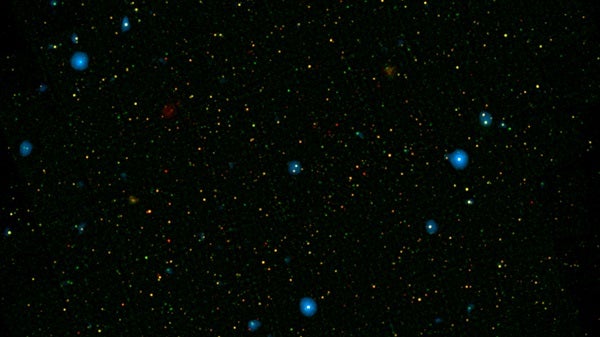Black holes are definitely the loudest things in the universe in the language of X-rays. Now, for the first time, the “sopranos” of the X-ray choir have been found.
NASA’s Nuclear Spectroscopic Telescope Array (NuSTAR) and its new data have, for the first time, been able to pinpoint these black holes that chatter high-energy X-rays. As for astronomers, NuSTAR has made significant progress on resolving the high-energy X-ray background.
NASA’s Chandra X-ray observatory has found many of the active black holes that contribute to the X-ray background, but those with higher pitched “voices” – those that let out high-energy X-rays – remained elusive.
When black holes consume surrounding material, they let out powerful X-ray bursts. This X-ray song comes from a chorus of millions of black holes, and this is what astronomer call the cosmic X-ray background.
“We’ve gone from resolving just two percent of the high-energy X-ray background to 35 percent,” said Fiona Harrison, the principal investigator of NuSTAR and lead author of this new study coming out in an upcoming issue of The Astrophysical Journal, in a press release. “We can see the most obscured black holes, hidden in thick gas and dust.”
The results will guide astronomers in understanding the feeding patterns of these supermassive black holes over time. This is important to understand as it factors into not only the growth of the black holes themselves, but also the galaxies that host them.
As they grow, the black holes continue to pull matter towards them as they are gravitationally dense. This causes the temperature of the matter to heat up, while the particles get sped up close to the speed of light. These processes combined make the surroundings around the black hole glow in the X-ray. Those that have more matter surrounding them (more fuel), will give off more high-energy X-rays.
“Before NuSTAR, the X-ray background in high energies was just one blur with no resolved sources,” said Harrison. “To untangle what’s going on, you have to pinpoint and count up the individual sources of the X-rays.”
NuSTAR is the first telescope able to resolve the high-energy X-rays into images.
“We knew this cosmic choir had a strong high-pitched component, but we still don’t know if it comes from a lot of smaller, quiet singers, or a few with loud voices,” said co-author Daniel Stern, the project scientist for NuSTAR at NASA’s Jet Propulsion Laboratory, in a press release. “Now, thanks to NuSTAR, we’re gaining a better understanding of the black holes and starting to address these questions.”
The same way X-rays can illuminate the bones underneath skin, X-rays can reveal what is buried around some of these supermassive black holes. NuSTAR can see through the dust to get a better view of what is going on inside.
With NuSTAR’s help, astronomers can begin to piece together the whole picture of supermassive black hole populations and how the evolve and change over time. The team will continue to take more images of the high-energy X-ray background with NuSTAR in order to get a better look at the raucous X-ray voices in the universe’s choir.










